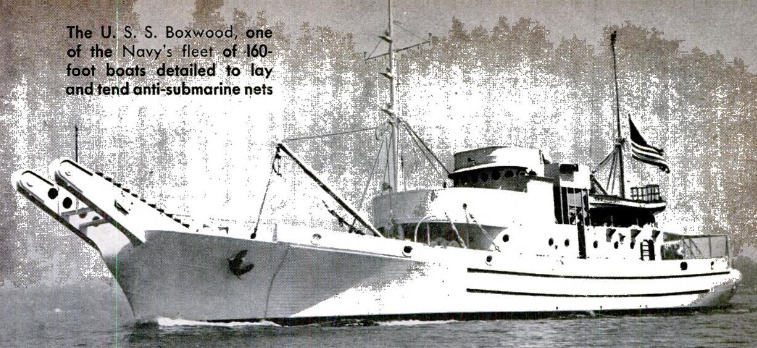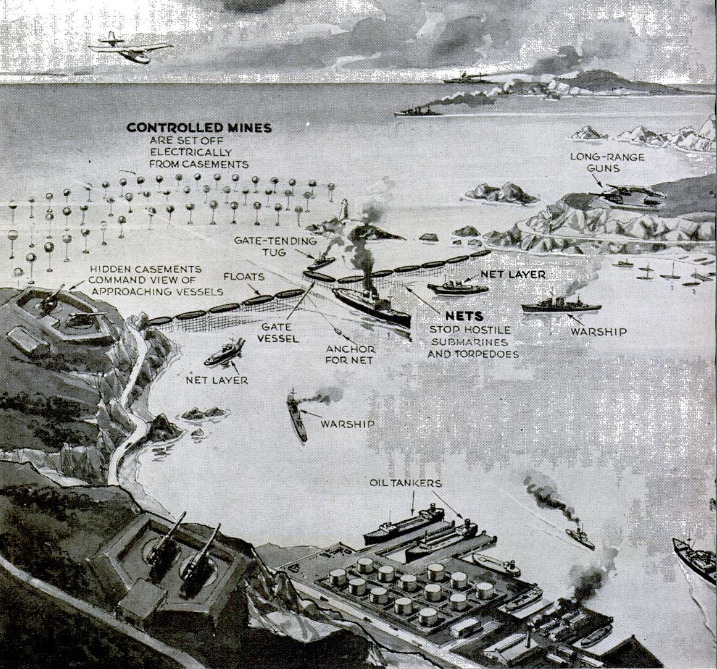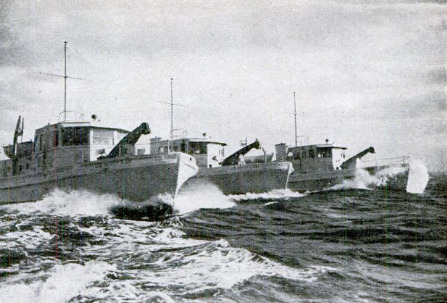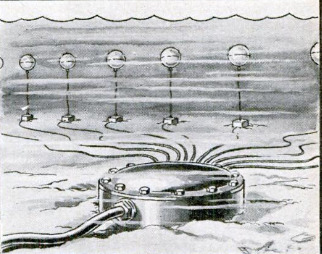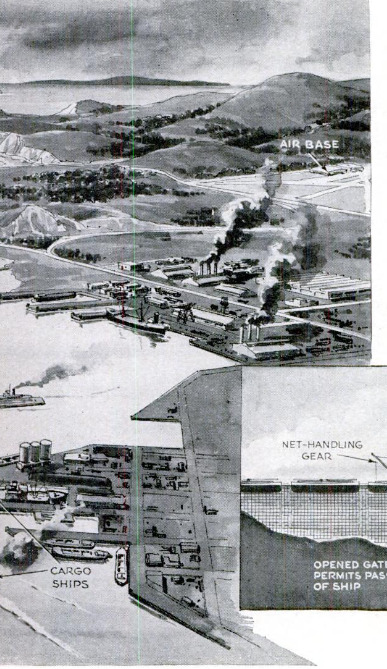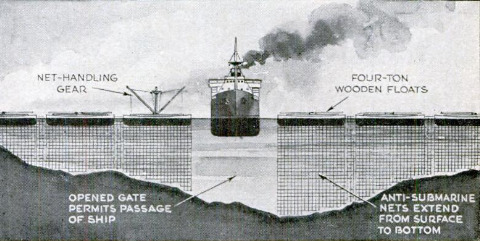Fighting the submarine menace
Item
-
Title (Dublin Core)
-
Fighting the submarine menace
-
Article Title and/or Image Caption (Dublin Core)
-
Title:
Fighting the submarine menace
-
extracted text (Extract Text)
-
HARBOR defense — guarding anchored
and tied-up ships—constitutes one of
the most important branches of mili-
tary science today. It calls for anti-subma-
rine nets and controlled mines, and such
craft as are needed to lay and tend them.
In each respect, vast improvements have
been made since the last world war.
Harbor nets, often supplemented by na-
tural obstacles and by blockships purposely
sunk at suitable points, completely close
the mouth of a port. Their floats support a
mesh of heavy metal, extending all the way
to the bottom and anchored or weighted
sufficiently to prevent the entrance of an
enemy submarine. Reportedly of as much
as three-inch thickness, their close mesh
stops both submarines and torpedoes. So
that friendly vessels can enter and leave a
port thus screened, a movable “gate” sec-
tion of the net may be opened or closed at
will, |
The U.S. Navy already has developed
special vessels designed from the keel up
for the express purpose of handling harbor
nets. If they have been turned out on
schedule — war restrictions on launching
announcements preclude more definite in-
formation—a fleet of from 70 to 90 or more
net boats should now be in service. They
fall into three classes.
Most interesting of the new craft are the
largest type—500-ton vessels intended for
laying and repairing nets. From their over-
hanging bow gear to their rounded sterns,
they have an overall length of about 160
feet. The class includes ships named after
trees, such as the U.S. S. Locust, Bozwood,
and Gum Tree. So as not to interfere with
construction of seagoing men-of-war, many
have been built at inland shipyards.
A second type of net vessel, resembling a
barge but specially equipped for its service,
acts as the gate of the net. A Pennsylvania
shipbuilding and engineering firm has been
filling Government orders for many of the
110-foot, motorless craft.
Net-tending tugs, the third class of boats,
open and close the gates. They also, on oc-
casion, assist in net-laying operations. Many
of these 70 to 100-foot wooden craft, it is
reported, have been built for the Navy.
Others have been purchased from tugboat
operators and converted for Navy purposes,
as has at least one purse seiner.
During the last world war, tugboats alone
served as hastily improvised net-laying ves-
sels, in contrast with the specialized ships
now available. Likewise, gasoline drums and
beer kegs have given way to large wooden
floats, to support the nets.
No less advance has occurred in the art of
laying the Army's controlled harbor mines.
In contrast with “contact” mines, the Army
mines distinguish between friend and foe.
Moored in submerged rows, they are set off
electrically by observers in hidden case-
mates ashore, just as an enemy vessel goes
by. Telescopes spot the location of surface
craft. But if a hostile
submarine blunders into
one of the mines, a bell
immediately rings in the
casemate.
U.S. harbor protection
by nets and mines is as
vital as it is deomed
strong. New kinds of nets
have been developed, and
new methods of net lay-
ing perfected, including
ways to keep thc un
wieldy apparatus in
position. And modern
mine-planting crews can
quickly transform a de-
fenseless port into one
that offers a deadly men-
ace to hostile visitors.
-
Language (Dublin Core)
-
Eng
-
Date Issued (Dublin Core)
-
1942-03
-
pages (Bibliographic Ontology)
-
49-51
-
Rights (Dublin Core)
-
Public domain
-
Archived by (Dublin Core)
-
Sami Akbiyik
 Popular Science Monthly, v. 140, n. 3, 1942
Popular Science Monthly, v. 140, n. 3, 1942

